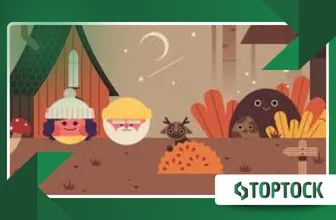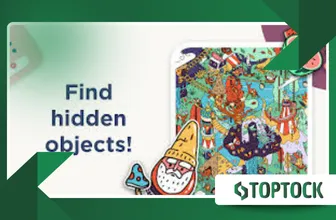Two Dots: Connect the Dots to Master Recursive Challenges

The simple premise of Two Dots, connecting identically colored dots, belies a sophisticated journey into recursive problem-solving and strategic depth.
Anúncios
This minimalist puzzle game has captivated millions, transcending its casual facade to offer a complex mental workout.
It’s a masterclass in elegant game design, proving that less is often, indeed, more.
For seasoned puzzle enthusiasts and casual players alike, the game introduces a fascinating blend of pattern recognition and forward-thinking logic.
Each level presents a unique grid, demanding not just speedy connections but careful resource management.
Anúncios
The Art of the Square: Where Simplicity Meets Subtlety
The core mechanic, linking two or more dots, is intuitive, yet the ability to form a Square fundamentally changes the game’s dynamic.
Creating a four-sided shape of the same color eliminates all dots of that color from the board. This is where the recursive challenge truly emerges.
Success is often determined by anticipating the cascading effects of a single move.
Every formed square is a strategic reset, drastically altering the board state and setting up the next complex sequence.
It’s not enough to clear the board; the smart player seeks to maximize the clearing effect. Imagine you need to clear 10 blue dots.
A single square is immensely more efficient than five separate lines of two.
The game beautifully enforces the idea that local optimization often leads to global failure.
Reckless matching can leave the player stranded, out of moves and short on objective requirements.
Beyond the Basics: Evolving Mechanics and Mental Acuity
As players progress through the thousands of available levels, Two Dots continually introduces fresh, innovative elements.
Anchors, Ice, Fires, and Color Bombs are just a few of the obstacles that turn simple grids into elaborate logic puzzles.
These mechanics force players to adapt their fundamental strategies, demanding a fluid and non-linear approach to problem-solving. It’s a constant exercise in mental flexibility.
Read more: June’s Journey: Solve Mysteries Hidden in Beautiful Puzzle Levels
For instance, the Ice mechanic requires dots to be matched adjacent to the frozen block to chip away at it.
This forces the player to ignore immediate point opportunities in favor of long-term structural dismantling.
This progression mirrors real-world analytical tasks where constraints are continuously introduced to an established process.
Doesn’t effective strategy always involve adapting to unexpected limitations?
Recursive Thinking: The Core of the Two Dots Challenge
Recursive challenges in Two Dots mean that the solution to the current problem (clearing a specific set of dots) often depends on the solution to a subsequent, self-similar problem (how the board resets after the current move). Players must constantly think several steps ahead.
| Strategic Move | Immediate Effect | Recursive Implication |
| Forming a Square | Clears all of one color. | Maximizes move efficiency; guarantees a board restructure. |
| Clearing an Anchor | Removes an objective item. | Often creates space for new square opportunities above it. |
A great example is the “Falling Dots” dynamic. You must clear a specific color from the bottom of the screen.
The most effective way to do this isn’t to connect them directly, but rather to form squares higher up.
Read here: Homescapes: Design Rooms While Solving Fun Puzzles
The resulting cascade of new dots may bring more of the target color into a better position for a massive, final square. This counter-intuitive strategy is the hallmark of advanced play.
The Data Behind the Dots: A Global Phenomenon
The sheer longevity and widespread appeal of Two Dots are testaments to its quality.
According to a 2024 analysis published by Sensor Tower, the game has been downloaded over 100 million times globally since its release, solidifying its position as a giant in the mobile puzzle genre.
This isn’t fleeting success; it is enduring engagement.
This incredible reach is partly attributed to its highly accessible nature—simple to learn, nearly impossible to truly master.
It offers a meditative quality; the soft sounds and clean design create a calm environment for complex thought.
The game is a pure mental workout, an analogue to weight training for the brain.
The continuous need for predictive analysis keeps the mind sharp, preventing the stagnation that often accompanies rote memorization.

Strategic Depth and Copywriting Connections
From a game design and even a Copywriting perspective, Two Dots is an incredible study in elegant constraint.
Every element serves a distinct purpose, and there is zero clutter. This is a lesson for any writer: clarity and purposeful design lead to maximum impact.
For instance, consider a level where you have 5 moves left to clear 15 red dots. A novice player will desperately look for a line of five.
The expert, however, will scan for a single move that sets up a square in the next turn, maximizing their limited resources.
This is the essence of high-stakes problem-solving: don’t chase the obvious answer; find the move that recursively solves the greatest number of future problems.
It’s an intellectual chess game disguised as a children’s connect-the-dots exercise.
The sheer volume of unique level designs, with new packs released regularly, ensures that the recursive challenge is perpetually fresh.
The underlying rules remain constant, but the application is always new. This consistent innovation prevents player fatigue.
The Enduring Legacy of Two Dots Two Dots
Two Dots is more than a diversion; it’s a meticulously engineered logical system. It proves that the most profound challenges often emerge from the simplest of rule sets.
It demands foresight, strategic patience, and an understanding of cascading effects.
The success of Two Dots lies not in what it adds to the genre, but in how masterfully it maximizes its foundational components.
It is a benchmark for mobile puzzle game design that continues to influence the industry.
The game requires players to connect two dots, yet it truly connects the player with their own ability for complex, abstract thought.
Frequently Asked Questions
What are Squares in Two Dots and why are they important?
A Square is formed by connecting four or more dots of the same color that form a closed loop.
They are crucial because they instantly clear every dot of that color from the entire board, which is the most efficient way to achieve level objectives and restructure the grid for future moves.
How often does Two Dots release new content?
The developer, Playdots, consistently releases new content, including new Level packs and limited-time events (like Treasure Hunts and Arcade), on a regular weekly or bi-weekly basis to keep the experience fresh and engaging for long-term players.
Is Two Dots a free-to-play game?
Yes, Two Dots is free to download and play, supported primarily through in-app purchases for power-ups (Boosts) and extra lives, though the vast majority of the game can be completed without spending money.
++ The Dot Game That Breaks Your Brain










